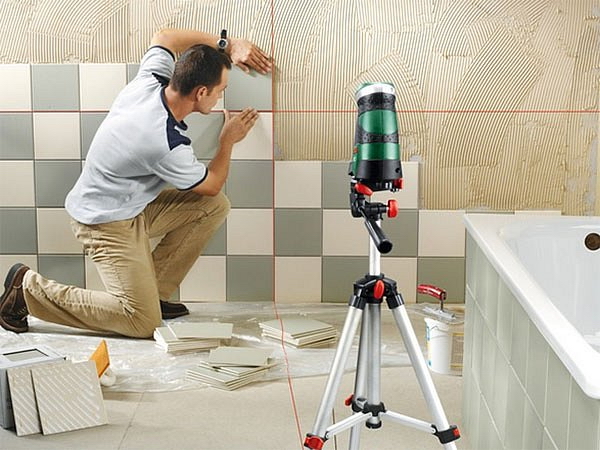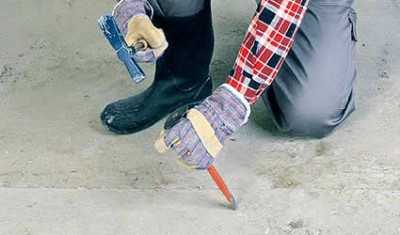Choose glue for the tile and determine its consumption
In the diversity of the market offer, it is difficult to determine and understand which glue for the tile is better to choose. What to look for when choosing glue? Once a tile was glued to an ordinary cement-sand mortar mixed in certain proportions. The most experienced master tilers strengthened the composition by adding glue, which was most often PVA. Such a composition did not provide strong adhesion of the tile to the base surface, so there were cases of lagging of the facing material. All modern adhesives still contain fractionated sand and cement, to which various modifying additives are added. It is in them that the strength is laid that allows the tile to hold for many years due to the increased adhesion of the adhesive to the base, its special plasticity and moisture resistance, as well as other important operational characteristics.
Glue for a tile - how to choose: video
Tile Adhesive Options
There are three key parameters by which the choice of tile adhesive suitable for the job is carried out. At the same time, price should not play a key role, because expensive adhesive compositions are used in special, specific conditions.
So, the choice of glue is affected by:
- material and dimensions of the selected tile;
- features and operating conditions of the tile;
- type of base on which the tile will be laid.
Tile material and dimensions
The weight of the tile depends on the material of manufacture and the size of the tile, so for heavy tiles it is necessary to select an adhesive that has a higher adhesion to the base. Manufacturers call this quality of the adhesive mixture differently adhesion to the base and indicate the quantitative value of this value on the packaging of the adhesive. The higher the adhesion value, the higher the glue cost. The rate of water absorption of the tile depends on the porosity of the material and is measured in percent, the number of which is necessarily indicated by the manufacturer on the package.
terms of Use
One of the determining parameters for choosing glue is the conditions specific to a particular room, namely the temperature range, air humidity, as well as the load on the tile. For example, for carrying out facing by a tile of an open loggia it is necessary to use moisture and frost-resistant glue. In general, it is customary to divide all adhesive mixtures into three groups.
- The first group includes ordinary cement adhesive (class C1 according to EN 12004), which is intended for outdoor work. Basic types of glue have adhesion to the base equal to at least 0.5 MPa. They can be used in both dry and wet rooms.
- The second group includes an improved cement adhesive mixture with additional characteristics (class C2 according to EN 12004). Recommended for internal work. Mixtures of this class have an adhesion of at least 1 MPa, and are also characterized by increased elasticity characteristics. They confirmed their effectiveness when laying tiles in rooms with a large temperature difference, high rates of air humidity. The adhesive can withstand increased static and dynamic loads.
- The third group includes all specialized adhesive compositions having specific properties that affect their area of application. This includes all modifications of heat-resistant glue used for facing fireplaces and stoves. White glue is indispensable when laying translucent, marble or mosaic tiles.A specially created adhesive for facing works in pools and other similar structures. Frost-resistant, high-strength adhesive, etc., are also available.
Types and features of the grounds
Laying tiles is carried out on any basis, which is usually divided into simple and complex surfaces. Simple substrates include all hard, durable, non-deformable surfaces, such as:
- concrete;
- brick;
- sand and cement screeds;
- walls made of cellular concrete.
Complex bases include all other types of surfaces, namely:
- glass;
- wooden;
- plastic;
- metal;
- drywall;
This also includes surfaces already lined with tiles, as well as easily deformable substrates and exposed to vibrations and increased loads.
On a note! If it is necessary to wall the walls of a dry room with a small tile, select a base adhesive with a coefficient of adhesion to the base of ~ 0.2-0.3 MPa. The exterior walls of the wooden house are lined with tiles made of natural stone using high-quality moisture and frost-resistant glue with high elasticity and adhesion of more than 1 MPa.
What determines the consumption of glue?
How to find out how much to buy glue for laying tiles? What to consider when calculating the required amount of adhesive mixture? The approximate flow rate is always indicated in the instructions, however this value can be adjusted depending on the characteristics of the base. Consultation can always be obtained from sellers selling building and finishing materials, as well as from builders who will be involved in repair work.
The consumption is influenced by the skill of the tilers, who are able to apply glue with a thin layer sufficient to adhere the surfaces. On average, in practice, no more than 5 kg of dry mix per square meter of surface should go. So, a 25-kilogram bag is enough for 5 square meters. If the bag is not enough, then the technology of laying the tiles is violated. For example, the base is not sufficiently aligned and the adhesive is used for other purposes. These are not only unjustified expenses, but also possible negative consequences during the operation of the premises in the future.
Cementitious adhesive mixtures diluted with water before use are able to provide excellent quality performance of tile cladding. In addition, manufacturers offer cheaper materials - mastics and pastes, ready to use. However, these one-component compositions are inferior to cement-based adhesive mixtures in terms of reliability of fastening. Epoxy (polyurethane) formulations containing two components, mixed immediately before installation, are also in demand. These adhesives are not only high cost, but high performance, facilitating the process of laying tiles in extreme conditions.





2 comments